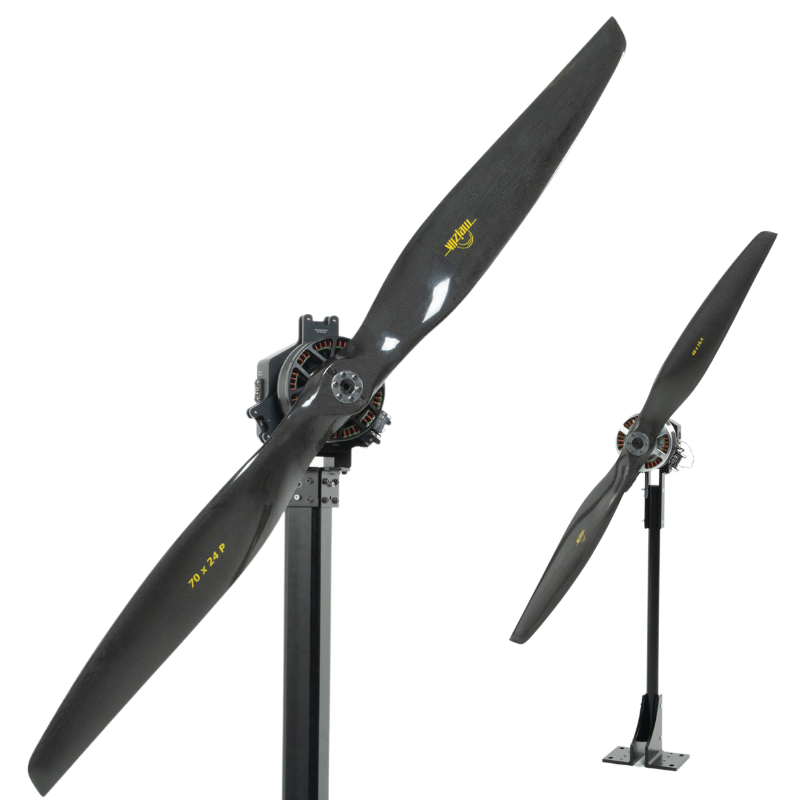By Lauren Nagel
Balancing drone propellers is a delicate process that directly impacts flight stability and component longevity. Different techniques can be used for different situations, where propeller material and size play a role, as well as the magnitude of the adjustment required.
This article dives into the specific methods for adding materials like glue and tape, as well as removing mass through sanding and trimming. We’ll also discuss the key considerations for ensuring safety and preserving propeller integrity throughout the process.
Table of Contents
-
Techniques for Adding Material
-
Paint, glue, epoxy, nail polish
-
Tape
-
Screws and washers
-
Techniques for Removing Material
-
Sanding
-
Trimming
-
Key Considerations
-
Next Steps
1. Techniques for Adding Material
To add mass, common materials include clear paint, glue, epoxy, nail polish, tape, and small screws and washers.
Paint, glue, epoxy, nail polish
Clear paint, glue, epoxy, and nail polish are good options for small corrections and they are the least likely to eject from the propeller. The substance can be added to any location of the blade, which is useful if you prefer a smaller correction that can be added towards the blade tip. The downside of this method is that it is more complicated to measure the mass of material added, and the user must wait for the substance to dry before continuing the test, though this can be sped up using an accelerator spray if working with glue.

Figure 1: Balancing a propeller with super glue (Leeman, 2016)
Tape
Tape is a good option as it can be weighed and added with no down time, and it also offers flexibility on where it can be added along the blade. However, tapes with insufficient strength are liable to fly off during a test, affecting the safety of the environment and the reliability of the data.

Figure 2: Adding weight to a propeller blade with tape
Screws and Washers
Small screws and washers can also be used to make adjustments. One option is to add washers to screws at the hub, adding mass near the center. Alternatively, hub screws can be swapped with lighter or heavier models to achieve the same effect. It is essential to ensure that the propeller is secure after making these adjustments to avoid creating dangerous projectiles.

Figure 3: Adding a heavier screw to one side of a propeller hub to achieve balance
Not sure when your propellers are sufficiently balanced? Check out our article on Propeller Balancing Standards for Drones.
2. Methods for Removing Material
Common methods for reducing a propeller's mass include sanding and trimming.
Sanding
Sanding can be performed on props of certain materials like plastic. It is important to sand the underside of the prop to limit the aerodynamic impact on the boundary layer. Using a finer sand paper is ideal to leave a smooth finish, though many users will start with a rougher sand paper to remove the majority of material (100 - 220 grit), then finish with a finer paper (400 - 800 grit).

Figure 4: Balancing a propeller with 220 grit sand paper (Leeman, 2016)
Trimming
If trimming is preferred, perhaps because a large amount of material must be removed, it should be trimmed from the trailing edge or blade tips to limit the aerodynamic impact. If trimming the tips, keep in mind that this will affect the diameter and pitch of the blades.

Figure 5: Trimming a plastic propeller with nail clippers (Albert Kim)
3. Key Considerations
The main advantage of removing mass over adding mass is that there are no new components carried forward. However, removing mass can affect the structural integrity and performance of the propeller, potentially affecting the max RPM and efficiency of the blades.
It is also important to remove material from the correct areas to protect the airfoil - the underside of the blade for sanding and the trailing edge and tips for trimming.
Finally, safety is paramount when balancing propellers, especially when balancing them dynamically. To start, ensure that your work space is clear of objects that could be swept up and become projectiles, wear safety glasses and gloves while working, stay clear of spinning propellers, and observe Murphy’s Law: assume that anything that could go wrong will go wrong, so plan accordingly.
To learn more about propeller balancing best practices, check out our in-depth White Paper on Propeller Balancing Techniques.
3. Next Steps
We hope that this article has been informative. Did we miss any techniques for adding and removing material? Let us know in the comments and we will look into them.
If you would like to learn more about propeller balancing techniques, check out our article on How to Balance Drone Propellers.
If you’re ready to start balancing your propellers, check out our dynamic propeller balancing equipment.



 Back to Blog
Back to Blog


Leave a comment